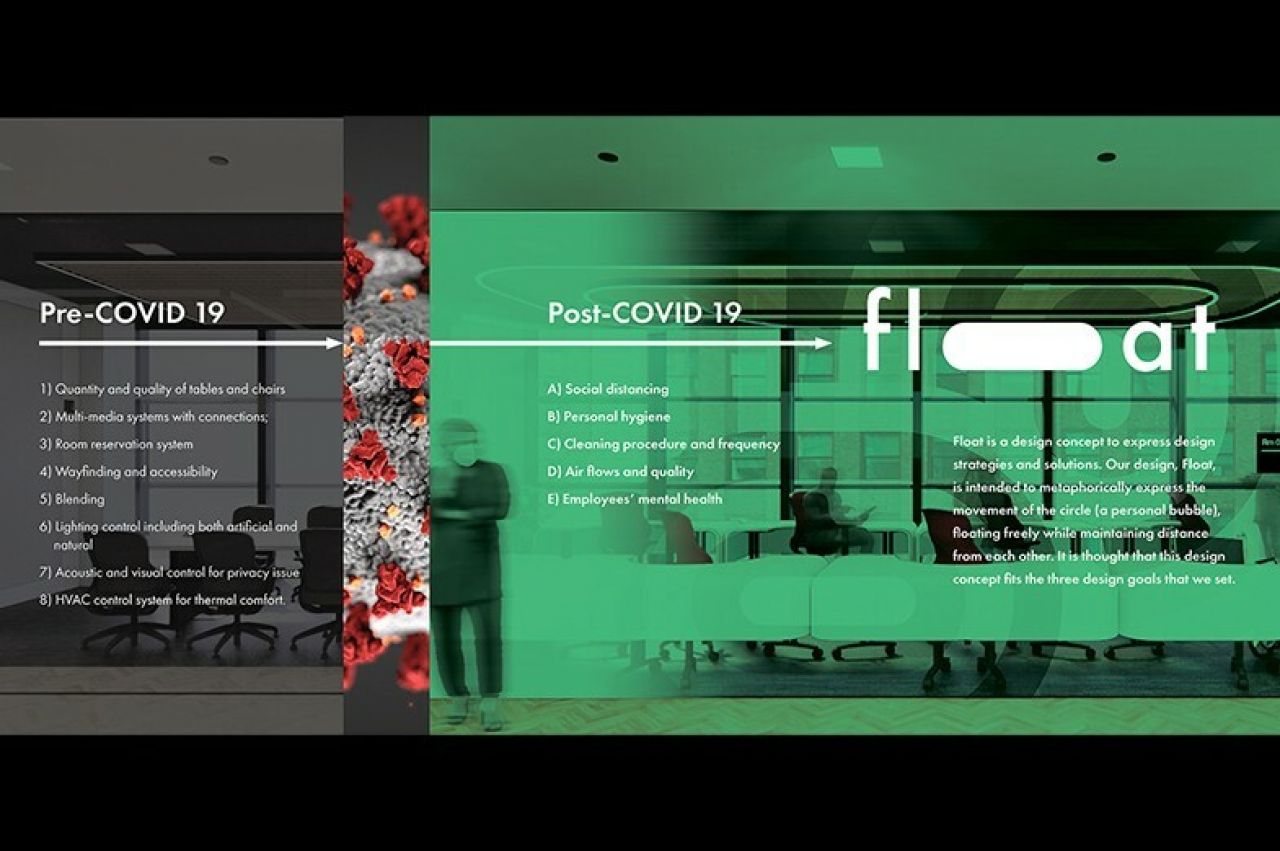September 23, 2020
Graphic design professor earns recognition for post-COVID-19 workspace design

UNIVERSITY PARK, Pa. — The collaborative design of a shared office in the post-COVID-19 workplace by Huiwon Lim, assistant professor of graphic design in the Penn State Stuckeman School, and Yongyeon Cho, assistant professor of interior design at Iowa State University, was selected as a winner in Work Design magazine’s Next Work Environment Competition.
The goal of the competition was to encourage individuals and small, multidisciplinary teams to submit innovative ideas for new work environments that could potentially be used by organizations to get people back to work quickly in safe, stress-free and productive spaces. Submissions were garnered in seven design categories: Workspace — 3,000 square-foot suite; Office Building Lobby/Amenity Space; Coworking Space; Workstation; Collaborative Spaces: Meeting, Kitchen/Café, Etc.; Work from Home Space; and New Change Management Process.
Lim and Cho’s submission, titled “Float,” won in Collaborative Spaces category. The design solution proposed by the duo takes into consideration social distancing recommendations, personal hygiene of employees, cleaning protocols and frequency, air flow and quality, and employees’ mental health in returning to the workplace in the post-COVID-19 environment.
“During the pandemic, Professor Cho and I talked at great length about teaching in a post-COVID environment and how traditional lecture rooms had a very different purpose than our ‘classrooms’ as designers. Our studio spaces are our classrooms and what we do in studio is very similar to what is done in a collaborative working space in an office setting,” explained Lim, who came to Penn State in the fall of 2019. He and Cho first became acquainted as graduate students at Iowa State and later as faculty members in the Departments of Graphic Design and Interior Design, respectively.
Our studio spaces are our classrooms and what we do in studio is very similar to what is done in a collaborative working space in an office setting.” — Huiwon Lim“Working with Professor Cho on this project was a tremendous experience for me as a designer because we each brought our own perspectives and knowledge of design together to overcome some of the very real challenges businesses are now facing,” said Lim. “I really enjoy when I have the opportunity to work with people who have different backgrounds and disciplines of expertise and I think we, in the Stuckeman School, are starting to realize the benefits of collaborative work both in our studios as teachers of future design professionals and in our own professions.” According to the competition website, “The ‘Next Work Environment’ is meant to define the period when we will be migrating and transitioning back to a non-COVID-19 (we assume that we will conquer this virus) socially-interactive condition. Clearly this crisis will impact a generation and new traditions will unfold, but we have an opportunity to reconsider our work environments now and create new spaces that inspire and rejuvenate us.” Submissions were judged on the designers’ ability to define and express a creative, pleasant, safe and productive work environment that clearly demonstrates new types of anti-contagion thinking. Jurors for the competition represented a wide range of industries, from health and wellness practices to architecture and interior design firms to the leading subscription-based streaming service and a popular athletic apparel company. Cho and Lim’s submission is featured on the Work Design website.

